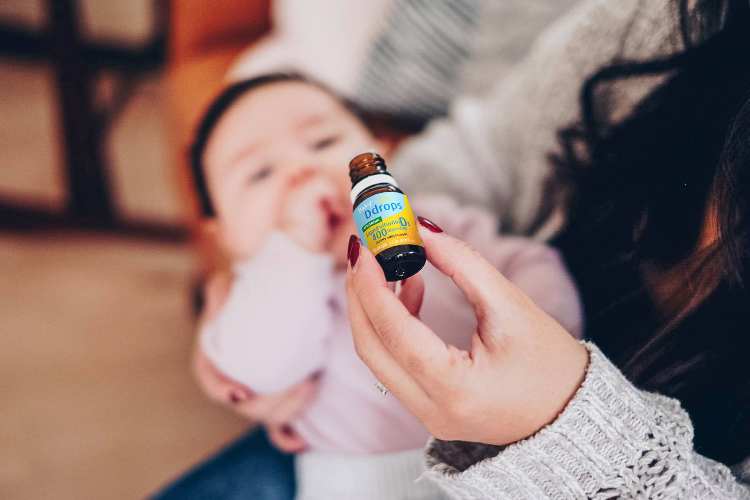August 15, 2016
It is not uncommon these days for their healthcare practitioner to recommend a vitamin D supplement, even though there are no signs of vitamin D deficiency.[7] Nevertheless, this gets us thinking…why? Is there a problem? Could you have vitamin D deficiency? It is always best to clarify and discuss this with your healthcare professional. It is also a good idea to learn more.
How do people know if they are low in vitamin D?
Experts define vitamin D deficiency in terms of blood levels. There are different degrees of ‘low’ vitamin D blood levels that characterize the range of vitamin D deficiency, and these vary from country to country and region to region based on localized vitamin D recommendations. The blood test is reported in different values for different countries. There are other blood tests (i.e. calcium, phosphorus, 25(OH)D, etc.) and sometimes a bone scan is also considered. Physicians will typically do a physical examination, with special attention to bone formation and muscle strength. They may also ask you about tenderness.
The vitamin D blood test [1]
Medical professionals determine whether somebody is vitamin D deficient or not by doing a simple blood test. The blood test is actually designed to look for a marker of vitamin D in the circulating blood, 25-hydroxyvitamin D, or 25(OH)D₃ or 25(OH)D (calcidiol) – the major metabolite of vitamin D₃ found in the bloodstream. In the United States, most vitamin D lab results are reported in ng/mL. In Canada and the UK, values are reported in nmol/L. (See the table below).
Some people lack vitamin D more than others; therefore, experts have developed a ‘vitamin D nutrition status’ scale. In Canada, the sufficiency cut-off is higher than in the US and UK. The table below describes the range of vitamin D and health in North America.
United States: Serum 25-Hydroxyvitamin D [25(OH)D] Concentrations and Health*[2]
| Serum 25(OH)D₃ range | Vitamin D nutritional status |
| >50 ng/mL (>125nmol/L) | Evidence links potential adverse effects to such high levels, particularly >150 nmol/L (>60 ng/mL) |
| >20 ng/mL (50 nmol/L) | Sufficiency (desirable optimal for fracture prevention) |
| 12-20 ng/mL (30-50 nmol/L) | Insufficiency |
| <12 ng/mL (30 nmol/L). | Deficient (diagnostic of nutrition deficiency, rickets or osteomalacia). |
Canada: Circulating levels of 25- hydroxyl-Vitamin D or 25(OH)D₃ by vitamin D nutrition status [3]
| Serum 25(OH)D₃ range | Vitamin D nutritional status |
| >600 nmol/L (>240 ng/mL) | Vitamin D toxicity |
| <225 nmol/L (<90 ng/mL) | Physiologic range from exposure to sunlight (or UV light) |
| <75 nmol/L (>30 ng/mL) | Sufficiency (desirable optimal for fracture prevention) |
| <40 nmol/L (<16 ng/mL) | Insufficiency |
| <25 nmol/L (>10 ng/mL) | Deficient (diagnostic of nutrition deficiency, rickets or osteomalacia). |
What is the optimal vitamin D level?
The answer is not as easy as it sounds. There are differences in opinions about what is “vitamin D deficiency” and what is “vitamin D insufficiency”. Why these two classifications anyway? A wide “optimal” range for vitamin D blood levels or 25(OH)D is reported between 25-80 ng/mL or 50 nmol/L – 225nmol/L.[4]
To test vitamin D blood levels… or not test?
In some regions, for example in Canada, physicians do not routinely test vitamin D blood levels on healthy individuals, unless they suspect vitamin D deficiency.[5] Since many Canadians are low in vitamin D, health authorities recommend that people should focus on getting enough vitamin D either naturally and/or with supplementation instead of going to the trouble and cost of having a blood test.
Many healthcare professionals, guided by their practical experience, recommend vitamin D supplementation without testing, even if their patients have no obvious risk factors or signs of deficiency[vi]. This is the same as infants. This is likely because their patients generally have inconsistent or limited daily sun exposure and/or they have little vitamin D intake in daily food.
Vitamin D blood tests can be helpful for healthcare practitioners to evaluate a suspected case of vitamin D deficiency and allow them to diagnose, monitor, and treat the condition if necessary.
Talk to your healthcare practitioner about your individual vitamin D status and needs. Remember, Ddrops® products are not indicated to treat or correct vitamin D deficiencies; Ddrops® are intended to help maintain healthy blood levels of vitamin D.
[1] 25-hydroxy vitamin D test. NIH Medical Encyclopaedia https://www.nlm.nih.gov/medlineplus/ency/article/003569.htm[2] Institute of Medicine, Food and Nutrition Board. Dietary Reference Intakes for Calcium and Vitamin D. Washington, DC: National Academy Press, 2010.
[3] Laboratories, In-Common. Contact - In-Common Laboratories, 18 July 2018
[4] Kennel et. al. Vitamin D Deficiency in Adults: When to Test and How to Treat. Mayo Clin Proc. 2010 Aug; 85(8): 752–758. https://www.ncbi.nlm.nih.gov/pmc/articles/PMC2912737/
[5] “Public Information.” Vitamin D Testing - Ontario Health Insurance Plan - Ministry Programs - Public Information - MOHLTC, Government of Ontario, Ministry of Health and Long-Term Care
[6] Kennel et. al. Vitamin D Deficiency in Adults: When to Test and How to Treat. Mayo Clin Proc. 2010 Aug; 85(8): 752–758. https://www.ncbi.nlm.nih.gov/pmc/articles/PMC2912737/
[7] Kennel et. al. Vitamin D Deficiency in Adults: When to Test and How to Treat. Mayo Clin Proc. 2010 Aug; 85(8): 752–758. https://www.ncbi.nlm.nih.gov/pmc/articles/PMC2912737/




Để lại một bình luận
Trang web này được bảo vệ bằng hCaptcha. Ngoài ra, cũng áp dụng Chính sách quyền riêng tư và Điều khoản dịch vụ của hCaptcha.